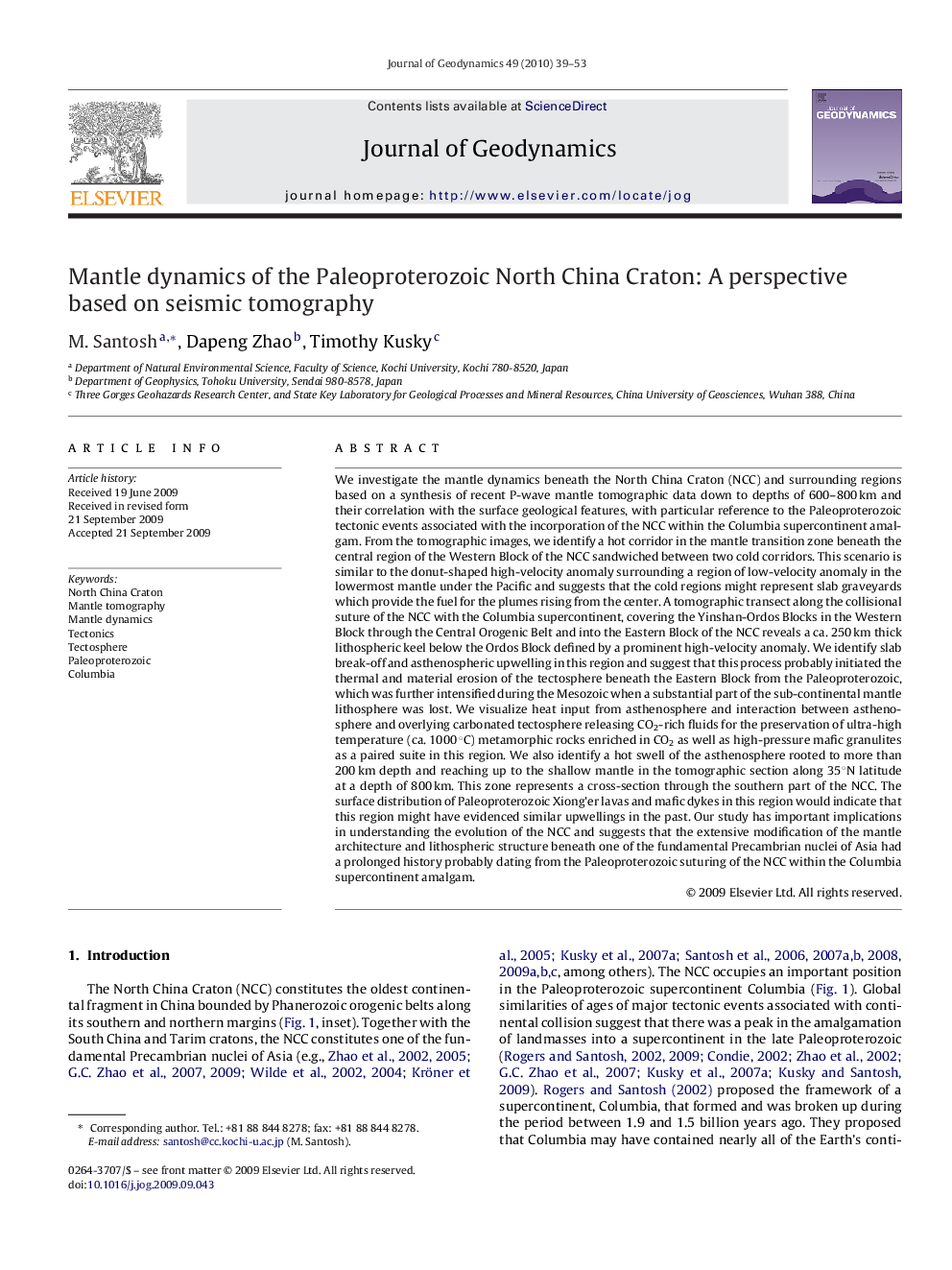| کد مقاله | کد نشریه | سال انتشار | مقاله انگلیسی | نسخه تمام متن |
|---|---|---|---|---|
| 4688579 | 1349856 | 2010 | 15 صفحه PDF | دانلود رایگان |

We investigate the mantle dynamics beneath the North China Craton (NCC) and surrounding regions based on a synthesis of recent P-wave mantle tomographic data down to depths of 600–800 km and their correlation with the surface geological features, with particular reference to the Paleoproterozoic tectonic events associated with the incorporation of the NCC within the Columbia supercontinent amalgam. From the tomographic images, we identify a hot corridor in the mantle transition zone beneath the central region of the Western Block of the NCC sandwiched between two cold corridors. This scenario is similar to the donut-shaped high-velocity anomaly surrounding a region of low-velocity anomaly in the lowermost mantle under the Pacific and suggests that the cold regions might represent slab graveyards which provide the fuel for the plumes rising from the center. A tomographic transect along the collisional suture of the NCC with the Columbia supercontinent, covering the Yinshan-Ordos Blocks in the Western Block through the Central Orogenic Belt and into the Eastern Block of the NCC reveals a ca. 250 km thick lithospheric keel below the Ordos Block defined by a prominent high-velocity anomaly. We identify slab break-off and asthenospheric upwelling in this region and suggest that this process probably initiated the thermal and material erosion of the tectosphere beneath the Eastern Block from the Paleoproterozoic, which was further intensified during the Mesozoic when a substantial part of the sub-continental mantle lithosphere was lost. We visualize heat input from asthenosphere and interaction between asthenosphere and overlying carbonated tectosphere releasing CO2-rich fluids for the preservation of ultra-high temperature (ca. 1000 °C) metamorphic rocks enriched in CO2 as well as high-pressure mafic granulites as a paired suite in this region. We also identify a hot swell of the asthenosphere rooted to more than 200 km depth and reaching up to the shallow mantle in the tomographic section along 35°N latitude at a depth of 800 km. This zone represents a cross-section through the southern part of the NCC. The surface distribution of Paleoproterozoic Xiong’er lavas and mafic dykes in this region would indicate that this region might have evidenced similar upwellings in the past. Our study has important implications in understanding the evolution of the NCC and suggests that the extensive modification of the mantle architecture and lithospheric structure beneath one of the fundamental Precambrian nuclei of Asia had a prolonged history probably dating from the Paleoproterozoic suturing of the NCC within the Columbia supercontinent amalgam.
Journal: Journal of Geodynamics - Volume 49, Issue 1, January 2010, Pages 39–53